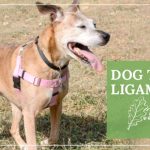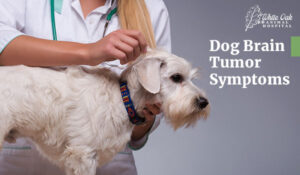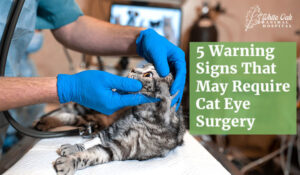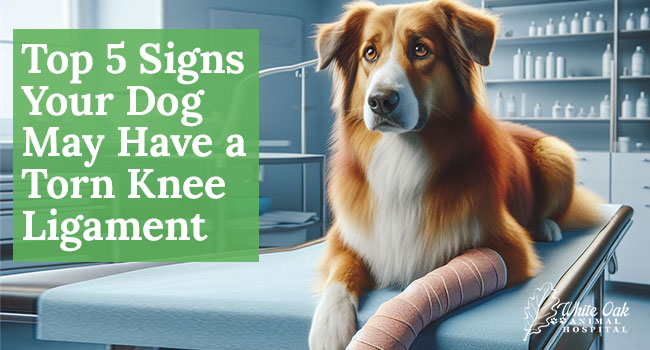
Recognizing the signs of a dog torn knee ligament is paramount for pet owners. Dog torn knee ligaments can significantly affect your furry friend’s quality of life. Imagine your dog experiencing constant discomfort or difficulty moving due to an untreated knee injury – it’s a distressing scenario for both pet and owner.
By being attentive to potential symptoms early on, such as limping or swelling around the knee joint, pet owners can take proactive steps to seek veterinary care for a dog’s torn knee ligament. Timely intervention alleviates your dog’s discomfort and minimizes the risk of further complications associated with untreated knee ligament injuries. In this section, we’ll delve deeper into the significance of recognizing these signs and understanding how they manifest in your canine companion.
Understanding Dog Torn Knee Ligaments
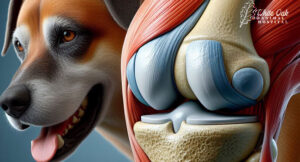 To understand a dog torn knee ligament, we must first grasp the intricacies of a dog’s knee anatomy. The knee joint, or stifle, is a complex structure comprising bones, cartilage, ligaments, and tendons. Among these structures, the cranial cruciate ligament (CCL) plays a crucial role in stabilizing the knee during movement. When this ligament becomes torn, commonly due to sudden trauma or degeneration over time, it compromises the joint’s stability, leading to pain, inflammation, and impaired mobility for the dog.
To understand a dog torn knee ligament, we must first grasp the intricacies of a dog’s knee anatomy. The knee joint, or stifle, is a complex structure comprising bones, cartilage, ligaments, and tendons. Among these structures, the cranial cruciate ligament (CCL) plays a crucial role in stabilizing the knee during movement. When this ligament becomes torn, commonly due to sudden trauma or degeneration over time, it compromises the joint’s stability, leading to pain, inflammation, and impaired mobility for the dog.
Understanding the mechanisms behind dog torn knee ligament tears, such as excessive twisting or sudden movements, is crucial for pet owners to grasp the severity of the injury and the importance of seeking prompt veterinary care. By comprehending the underlying causes and implications of canine knee ligament tears, pet owners can make well-informed decisions regarding their dog’s health and overall well-being.
Top 5 Signs Your Dog May Have a Dog Torn Knee Ligament
Limping or favoring one leg
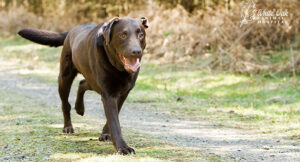 If you suspect your furry friend has a torn knee ligament, observing limping or favoring one leg can be a significant indicator. You might notice your furry companion putting less weight on one leg while walking or showing a noticeable limp, particularly after physical activity or rest. This behavior is a clear sign of discomfort or pain linked to the affected knee joint, prompting your dog to minimize pressure by avoiding putting weight on it. If you observe these symptoms persistently, seeking veterinary attention promptly is crucial to address any potential issues with your dog’s knee ligament health.
If you suspect your furry friend has a torn knee ligament, observing limping or favoring one leg can be a significant indicator. You might notice your furry companion putting less weight on one leg while walking or showing a noticeable limp, particularly after physical activity or rest. This behavior is a clear sign of discomfort or pain linked to the affected knee joint, prompting your dog to minimize pressure by avoiding putting weight on it. If you observe these symptoms persistently, seeking veterinary attention promptly is crucial to address any potential issues with your dog’s knee ligament health.
Difficulty rising or standing
Another unmistakable indication of a dog torn knee ligament is difficulty rising or standing. Your canine companion may find it challenging to stand up from a lying or sitting position or hesitate or appear hesitant when attempting to stand. This difficulty stems from the pain and instability of the torn ligament, making it arduous for your pet to support their weight on the affected leg. If you notice these signs persisting, it’s crucial to consult with a veterinarian promptly to address any potential issues with your dog’s knee ligament health.
Swelling around the knee joint
Swelling around the knee joint is a prevalent symptom of a dog torn knee ligament. You may notice visible swelling or puffiness around the affected knee, often accompanied by warmth to the touch. This swelling indicates inflammation and fluid buildup within the joint, serving as the body’s natural response to the injury. Keeping an eye on changes in your dog’s knee size or shape can offer valuable insight into their condition and help guide your decision-making regarding their veterinary care and treatment.
 Reluctance to engage in physical activity
Reluctance to engage in physical activity
If your dog displays reluctance or hesitancy to participate in physical activities like walking, running, or playing, it could be a sign of a dog torn knee ligament. Dogs experiencing this injury often lose interest in activities they once enjoyed due to the discomfort and pain associated with the torn ligament. Pay close attention to any shifts in your dog’s behavior or activity level, as they may indicate underlying musculoskeletal issues that require veterinary attention.
Audible popping or clicking sounds
Audible popping or clicking sounds from your dog’s knee joint may indicate a dog torn knee ligament. These sounds, often popping, clicking, or grinding noises, occur when the torn ligament causes abnormal movement or rubbing within the joint. While not always present, these sounds can be concerning and should prompt further evaluation by a veterinarian. Keep an ear out for unusual noises during your dog’s movements, as they can provide valuable diagnostic information.
Recognizing these top 5 signs of a dog torn knee ligament is crucial for pet owners to ensure their furry friends receive timely veterinary care and appropriate treatment. If you notice any of these symptoms in your dog, don’t hesitate to consult your veterinarian for a thorough evaluation and personalized treatment plan.
Diagnosis and Treatment Options
When suspecting a dog torn knee ligament, seeking veterinary care for a proper diagnosis is crucial. Veterinarians undergo extensive training to evaluate your dog’s symptoms, conduct necessary tests, and deliver an accurate diagnosis. By employing techniques like physical examination, joint manipulation, and imaging methods such as X-rays, veterinarians can gauge the severity of the potential ligament injury and detect any accompanying damage to nearby structures.
Upon confirmation of a torn knee ligament, veterinarians will discuss treatment options tailored to your dog’s specific needs and the severity of the injury. One primary treatment approach for a dog-torn knee ligament is surgical intervention. Surgical procedures, such as ligament repair or stabilization techniques, aim to restore stability to the knee joint and promote healing of the torn ligament. Your veterinarian will discuss the different surgical approaches available and help you make an informed decision based on your dog’s age, size, activity level, and overall health.
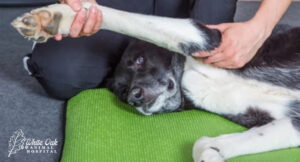 In cases where surgery is not feasible or preferred, conservative management may be recommended. Conservative treatment options for a dog-torn knee ligament focus on managing pain, reducing inflammation, and promoting healing through non-surgical means. This may include rest, restricted activity, weight management, physical therapy, and anti-inflammatory medications or supplements to support joint health.
In cases where surgery is not feasible or preferred, conservative management may be recommended. Conservative treatment options for a dog-torn knee ligament focus on managing pain, reducing inflammation, and promoting healing through non-surgical means. This may include rest, restricted activity, weight management, physical therapy, and anti-inflammatory medications or supplements to support joint health.
It’s essential to discuss the pros and cons of each treatment option with your veterinarian to determine the best course of action for your dog. While surgery may offer more immediate stabilization of the knee joint, conservative management can be a viable option for dogs with mild to moderate injuries or those who may not be suitable for surgery due to underlying health concerns.
Preventive Measures and Care Tips
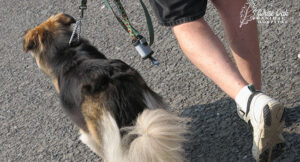 Preventing knee ligament tears in dogs is paramount for pet owners concerned about their furry companions’ well-being. Maintaining a healthy weight is crucial, as excess weight can strain the knees and increase the risk of injury. To mitigate this risk, ensure your dog receives a balanced diet and regular exercise to support joint health.
Preventing knee ligament tears in dogs is paramount for pet owners concerned about their furry companions’ well-being. Maintaining a healthy weight is crucial, as excess weight can strain the knees and increase the risk of injury. To mitigate this risk, ensure your dog receives a balanced diet and regular exercise to support joint health.
Additionally, avoiding overexertion during physical activities and using proper restraints, such as leashes or harnesses, can prevent sudden movements that may lead to dog torn knee ligaments. Incorporating joint supplements containing glucosamine and chondroitin into your dog’s diet can further promote joint health and reduce the likelihood of knee injuries.
It’s also essential to monitor your dog for any signs of discomfort or mobility issues, such as limping or difficulty rising, and seek veterinary care promptly if a knee injury is suspected. Furthermore, providing proper care for a dog recovering from torn knee ligaments is crucial for rehabilitation. Following veterinary recommendations for post-operative care, providing a comfortable environment for rest, gradually increasing activity levels and monitoring for complications are all essential aspects of supporting your dog’s recovery.
 We encourage you to seek assistance from White Oak Animal Hospital for any concerns regarding your pet’s knee health. At White Oak, we offer integrative options not available elsewhere, including TCVM telemedicine consultations backed by over 28 years of experience. If your dog suffers from knee problems, cruciate disease, or a torn ACL, it’s essential to understand your options and make informed choices for their well-being.
We encourage you to seek assistance from White Oak Animal Hospital for any concerns regarding your pet’s knee health. At White Oak, we offer integrative options not available elsewhere, including TCVM telemedicine consultations backed by over 28 years of experience. If your dog suffers from knee problems, cruciate disease, or a torn ACL, it’s essential to understand your options and make informed choices for their well-being.
Our free ebook, “What Your Vet May Not Tell You About Torn Knee Ligaments,” provides valuable insights into the causes, symptoms, and treatments of torn knee ligaments. This ebook, written by holistic TCVM veterinarians Dr. Casey Damron and Dr. Marc Smith, empowers pet parents to make the best decisions for their furry friends’ particular situations. Don’t hesitate to download your copy today and equip yourself with the knowledge needed to support your pet’s recovery journey.
Frequently Asked Questions
What are the common causes of a dog torn knee ligament?
Dog torn knee ligaments can result from various factors, including sudden twists, repetitive stress, or degenerative changes in the knee joint.
How can I tell if my dog has a torn knee ligament?
Look for signs such as limping, difficulty rising, swelling around the knee joint, reluctance to engage in physical activity, or audible popping sounds, which may indicate a dog torn knee ligament.
Can a torn knee ligament heal on its own without surgery?
While minor tears may improve with rest and conservative management, severe tears often require surgical intervention for optimal recovery.
What treatment options are available for a dog torn knee ligament?
Treatment options may include surgical repair or conservative management, depending on the severity of the tear and your dog’s overall health. Your veterinarian can discuss the best approach for your dog’s specific situation.
How long does it take for a dog to recover from knee ligament surgery?
Recovery time varies depending on the type of surgery and your dog’s overall health but typically ranges from several weeks to several months. Your veterinarian will guide post-operative care and rehabilitation to support your dog’s recovery.
Related Posts
-
Best Dog ACL Tear Treatments
Much like humans, dogs experience joint pain for a variety of reasons. Sometimes joint pain…
-
Unlocking the Truth About Dog Cushing's Disease: 5 Signs Your Dog Might Have Cushing's Disease
Dog Cushing's disease, also known as hyperadrenocorticism, is a condition where the adrenal glands produce…
-
5 Signs of Dog Cancer: Spotting Symptoms and Debunking Myths and Misconceptions
Dog cancer is, unfortunately, a prevalent concern among canine companions. It affects a significant number…
-
5 Warning Signs of Dog Allergies You Shouldn't Ignore
Canine health is significantly impacted by dog allergies, a prevalent concern among pet owners. Recognizing…

